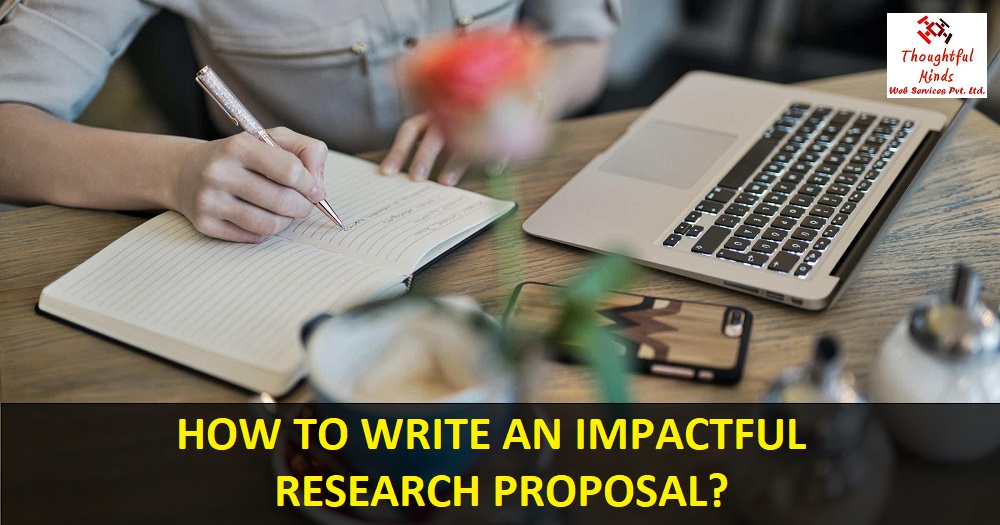A research proposal draft is the face of any research project. It is widely regarded as the first point of contact between the researcher and the potential sponsor to fund all the efforts. Also termed as thesis proposal, it is always expected to be articulative and persuasive at the same time. It is the very first stage of sponsorship hunt where the fate of our future research plans is decided. That is the reason why, no one can deny how critical and imperative the ideal formation of this draft ought to be.
GET HELP INSTANTLY
Place your order to get best assignment help
(since 2006)
Here, our prima-facie objective would be to ensure that the research proposal draft shall pass the yardsticks put forth by the concerned proposal review committee. Obviously, all the hard work that we invest in the preparation of the draft is to get a call to set up a final meeting before signing up the contract and get the funds released. It is certainly not to wait for its turn with tons of other research proposal applications and eventually meet its end in a paper shredder or trash bin.
Introduction
Let us get one thing straight and clear! The success of our research proposal is largely depended on our own preparations. If we carefully and diligently follow the steps mentioned below, then we can elevate the rate of success of our thesis proposal to a remarkable extent. Firstly, when we speak in standard terms then the thesis proposal required to be written in present or future tense. Yes, when we are writing down an actual master’s thesis, then it is suggestive to go with the usage of past tense.
Now, let us look at the research proposal writing steps that are indispensable part of an ideally crafted draft. Once we go through them, it would be fully expected that you be ready to frame your next research proposal in optimum terms. In case you face too many complications and challenges to move further, then it is a prudent measure to ask for research proposal help from a credible assignment help agency.
The Structural Guidelines and Framework of Writing a Research Proposal
Step 01: Write an Impactful Introduction –
If we can fetch the attention of the reader right from the word one, then half of the battle is already won. It is always advisable to keep the writing of this part for the last, as it would be more feasible for us to incorporate more components to it once we are done with all the other sections of the draft. One such advise might appear bizarre at first; however, it would sound more reasonable when everything falls into places. It is an ideal scenario to pen down an introduction when each element of the draft is thoroughly researched, written, and verified, providing us a crystal-clear picture of what the product would appear like. When we have this strategy on our mind, it always sounds to be a logical step to keep the introductory part of the proposal for the last.
Step 02: The Abstract –
A standard research proposal does feature a word count in between 5,000 to 25,000 words. That is the reason why, for those who cannot navigate through the entire draft in one go would require a summary of the entire document. This summary would be termed as an abstract and demonstrate to the reader the key points from the major sections of the document. The ideal word length of writing an abstract should be nearly 200 words. As it is a form of summary, it is recommended to keep it for the last to make it impressive, comprehensive, and fully thought-out.
Step 03: Stating the Problem –
It is the time to voice our research question. It is the time to reinstate it in the form of a sentence that can resonate inside the reader time and again. The statement ought to be impactful enough and required to be revolving around the interests of the reader. It should directly address the current problem or the prospects of the party which is ready to flow in the cash for the future research. If we are struggling to frame a proper problem statement, then it is apt to hire research paper writing services from an agency that can seamlessly handle the job for us.
Visit the below link to mug-up all the master tips and techniques that nobody bothers to share for free.
 MUST READ: Wish to Get your Research Proposal Responded with a Resounding ‘Yes’? Learn How to Make it More Impactful Here!
MUST READ: Wish to Get your Research Proposal Responded with a Resounding ‘Yes’? Learn How to Make it More Impactful Here!
Step 04: Providing the Background –
Give an insight about the emergence of the problem. There must be some background info on the issue to stress upon the fact that the resolution to the problem is inevitable. It should also feature a background to the concerned research question and demonstrate the basic understanding of the current literature and the research studies inside the zone of the proposed research topic.
It features a very critical portion of our proposal draft and should offer an extensive review of the literature of our topic. If there are a few gaps, contentions or issues that are required to be raised without any delay, then it is the right time to do so. We are required to highlight how our research deems fit to the literature and display the understanding and knowledge of the concerned field of research.
Step 05: Declaration of the Purpose –
We ought to necessarily highlight the aims, purpose, and objectives of our thesis proposal. It should feature a detailed description of the concerned research question, the key objective of the research, what are the potential by-products we can anticipate out of the research, the description of our approach (research methodology), etc. Here, we are required to incorporate all our intention to answer or investigate, our hypothesis, the benchmarks of the research, i.e., what we wish to feature within the research and what we wish to leave out.
Step 06: State the Significance –
Highlight the importance and criticality of the problem and investigating about the same is going to add value to our work. We can also mention the work that has been conducted in the same field in the past and what was the actual relevance of it. Besides, never hesitate to stress upon the fact that how the proposed research work can propel exploration of new dimensions of prosperity and success.
Step 07: Methodology and Method –
It is the absolute right of the reader to be familiar with the methods that we are about to apply for our research project. The methodology is generally referred to the theory that is applied to vindicate the utility of specific research methods that we prefer to use. There is always a possibility of using more than one methodology and they are required to be enlisted in this section of the draft. Besides, the method showcases the approach we intend to investigate the given question or a set of questions. It can be in the form of a questionnaire, a personal interview, group focussed interviews, a sample survey, a wānanga, etc.
Please note that Kaupapa Māori is a form of methodology, that generates and navigates research methods. If we speak in terms of this particular section, then we are required to provide a brief overview of the Kaupapa Māori theory or/and theories, what is the reason behind the selection of this methodology and how our research question deems fit within this structural methodological framework.
If we are implicating more than one methodology, then we ought to demonstrate why we have chosen to employ another methodology right alongside Kaupapa Māori, and how they are pertinent to the goals and objectives of our research.
We should also throw some light over different methods that we are intended to use in an elaborative sense and deliver justification as to why we have chosen them. Additionally, it is helpful to discuss how many numbers of participants we are intended to involve in our research journey, how we are intended to find or approach the participants, and how will they play their part in our study.
Make yourself familiar with all the stages of comprehensive research methodology at the below link and enrich your curiosity to the next level of self-fulfilment.
 MUST READ: Comprehending Research Methodology with Insight of All the Stages
MUST READ: Comprehending Research Methodology with Insight of All the Stages
Step 08: Literature Review –
It does not matter whether you are preparing the research proposal draft for master’s research program or commercial research sponsorship, it would be regarded incomplete without literature review pertinent to the research topic. A detailed analysis of the literature sources is conducted to explain the nuts and bolts of the proposal in an elaborative manner. If there are any alternative perspectives pre-existing on the topic, then this is the right time to highlight them. They might turn out to be resourceful enough to research our question.
Step 09: Formulation of a Clear Hypothesis –
The section dedicated to set the goals for the thesis. It will deliver a basic artificial framework to successfully carry out the entire research project as it features the roadmap of planning in a practical sense. The hypothesis part is always a critical and decisive part of the research proposal draft and expected to be structured without loopholes with scientific backing from the beginning till the end. That is why, there is no harm in seeking online research proposal help from a trustworthy agency that can make it perfect in all sense.
Step 10: Defining Our Terms –
The terms that we use in our thesis proposal might turn out to be way much complex for the people from general background to understand. It is our duty to help them understand the definition of each term in layman’s language so that there shall remain no gap between the communication when we proceed to start the work afterwards.
Wish to know about some of the lesser-known secrets of writing a paper that can garner acclaim? Read the below link to make your next assignment perfect in all terms.
 MUST READ: Digging into the Unexplored Dimensions of Writing a Praiseworthy Research Paper
MUST READ: Digging into the Unexplored Dimensions of Writing a Praiseworthy Research Paper
Step 11: Schedule and Timeline –
When we suggest a particular timeline to demonstrate the possible execution of the research steps, it encourages the reviewers to believe in the fact that the proposal is rational enough to be applicable on ground. If we are proposing the research plan on our own terms, then we can take the leverage of defining the schedule as per our convenience. In case it has been drafted by the institution or sponsor then they would have the luxury to set it for us as per their suitability and we ought to abide by the same. Either way, it is imperative to plot the timeline of the intended progress of the given project right from start to finish. All sorts of potential outputs, findings and reports are expected to be inserted to this schedule.
Step 12: Ethical Approval –
Some institutions do require that any form of research featuring interaction with the human participants are required to get approval from certain ethical advisory committees or boards. The key purpose of this ethical approval is to make sure that the concerned researcher is conducting the research in an ideal manner that is respectful enough to the participants and fellow human beings that may turn out to be impacted by the research process. Here, it is significant for us that we seek out which form of ethical approval is relevant to our area of research.
Meanwhile, we might require seeking permission from more than one advisory committee based on the financial, institutional, as well as disciplinary background. All the applications for the ethical approval are procured directly from ethical committees themselves.
All kinds of ethical considerations are a prominent part of successfully conducing a Kaupapa Māori research. Getting an insight about the research ethics will influence all the aspects of our research, in specific, how we engage with the communities to perform our research and circulate our research findings. When we consider the research organisations of Māori community, then we would find that they are also starting to develop their own guidelines for research ethics to aid both the participants and the researchers to be culturally safe amid the course of the research process.
In the section of ethical approval, it is pivotal to outline from whom we are intended to seek the ethical approval, or/and when the ethical approval was acknowledged and granted and for how much period
Step 13: Sharing Research Assumptions –
Our thesis proposal is expected to be as much transparent as possible. Enlist all the basic assumptions that we are making while penning down the paper. We can always seek assignment help from the specialists in research proposal writing in case we do not know how to systematically pen down all the assumptions.
Learn how to distinguish between basic and applied research at the below link to make your research skills paramount in all sense.
 MUST READ: Basic vs Applied Research: Differences and Similarities that Every Smart Researcher Should Know About!
MUST READ: Basic vs Applied Research: Differences and Similarities that Every Smart Researcher Should Know About!
Step 14: Scopes and Limitations –
No one can deny the fact that there is no research that can be considered as fool proof. There are always issues related to scope and limitations and it is practically not feasible to cover everything in merely one research project. There comes the importance of transparency in the work, and it is always appreciable to set the limitations of the current research prospects and outline the scope of subsequent research in the days to come.
Step 15: The Procedure –
All the procedures are required to be conducted within the framework of the research and the reviewer/sponsor should be aware of each iota of detail. It is always helpful to boost the confidence of the investor in the said proposal or plan as the advisor or the board of advisors would realise that our words are not based on fancy tall tales, rather backed by concrete applicable evidence.
The best part of hiring thesis help from an agency of writers offering custom-writing services is that they can personalise the work as per the instructions assigned. Our requirement of research proposal writing can be expository or argumentative, just let their assigned writer get familiar with the outlined format and steps and the rest shall be taken care off by themselves. The key leverage of hiring the services of a professional writer is that we will not only a get an eloquently written draft but also a thoroughly edited and proofread one.
Just visit the order page, get a free quote, and make the most reasonable pay to avail the services that can transform your research fortunes forever.
Step 16: Resources –
The prima-facie objective of this section is to demonstrate the fact that we are fully capable of successfully carrying out the proposed research. We must shed some light over the resources that we have at our disposal and how they are adequate to get the job done. For example, the personal resources (like community or area under study, knowledge of the discipline, etc.), physical resources (like research instruments), or the USP of our research team that is seldom to find anywhere else in the market.
The list should be surplus enough to let us confidently ask for the resources that only the institute or the sponsor can provide, i.e., research funding, research collaborations, etc. The writers offering paid assignment help can make the job more convincing by smartly emphasizing over the strengths and articulately brush-off the weak points.
Step 17: Budget –
The most inevitable aspect that cannot be eschewed under any circumstances is the budget. It is the opportunity for us to play out things aggressively and quote the money that we think our research rightly deserves and render pertinent reasons why we think it should be finalised without negotiations. It is the time to provide a detailed budget outlining to get a blueprint of the expenses that we are about to incur to successfully conduct the research. Precisely where and how much money will be spent tend to vary from one project to another, and the actual size of the budget ought to reflect the actual size of the research project. The common list of expenditures shall include the human resources (like research assistants, advisory board members, transcribers, etc.) and technical equipment (computer hardware and software, Dictaphone, etc.), koha, stationary, etc.
Conclusion
A research proposal is not merely a piece of draft but rather an anecdote that would have something for each stakeholder directly or indirectly linked to the project. Stressing upon the pertinent facts, the flow of narration, the argumentative style of writing directly addressing the present and future requirements of the investors and how the scope of inclusive growth is enormous.
No one can draft 100% accurate prediction about a research and what future outcomes it can fetch. Yet, most of the prominent foundations, institutions and public and private entities pursue the scope of research investments without any hesitation. After all, what we invent or discover today is what reaps the fruits of tomorrow.
All the 17 steps that we mentioned above are an integral part of formatting an ideal research proposal that would work at many levels. We fully expect the points that we discussed above will help you prepare a solid research proposal draft the next time you share a table with a review committee. In case you wish to have an expert intervention to prepare a top-quality proposal draft on your behalf, then it is strongly recommended to seek research proposal help from Thoughtful Minds and let the real masters of the field bail it out for you.

 MUST READ:
MUST READ: 
